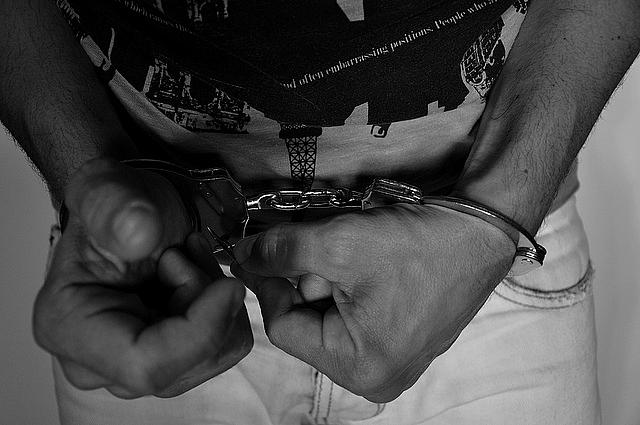The dangers of locking up the ‘kids we’re mad at’

When I trace back the genesis of my National Health Journalism Fellowship project, I always start in a law office in Russellville, Ark., a big town along Interstate 40 known for a relatively robust state university and a large public school system.
I was there that day last fall to hear about a boy and his lawsuit. Two large police officers had broken his arm in a juvenile detention center about 30 miles away, and a particularly graphic video of the incident was the centerpiece of the evidence against the men. After viewing the video, I talked with the boy’s attorney about how the 110-pound 13-year-old had come into the system in the first place.
“FINS,” he replied, an acronym for “Family in need of services,” a court designation that in the juvenile justice system rarely needs elaboration.
The lawyer then told me a story that I’ve heard in some form about a hundred times.
The boy had some anger management and behavioral problems. His parents had trouble keeping him at home. And so they went to the court to get help. A judge entered the picture, and things got serious. The judge placed several court-ordered restrictions on the boy — attend school, don’t run away, obey your teachers, among others.
For most kids, these types of parental admonishments carry a punishment of lost allowance, grounding or no Internet time. But when the judge gets involved, the punishment can be time behind bars thanks to an exception to federal law made in 1980. The exception allows a judge to detain kids like the boy if they violate a “valid court order.” Since the exception’s birth, several states have outlawed the practice or chosen not to use it at all. But in Arkansas, judges are some of the most prolific users of that authority.
The youth are known as status offenders and leading juvenile justice researchers have been warning for decades that placing these children in locked settings alongside criminally delinquent youth doesn’t help. Instead, it exponentially increases the chance that a child will commit crimes and later go to prison as an adult.
In 2013, the Coalition for Juvenile Justice released a 118-page report explaining in great detail how detaining status offenders increases the chance that youths will become adult criminals. The report also included a serious safety concern. Because status offenders are often detained in facilities that also house youths who have committed serious crimes, they are exposed to the threat of violence or sexual assault.
Status offenders also are exposed to drugs, gangs and worse criminal activity, increasing the likelihood that they will feel pressure to toughen up and do worse things than what they were locked up for.
A report issued in 2006 by the Justice Policy Institute titled “The Dangers of Detention” credited a 1999 study conducted in Arkansas of showing other ill effects. Detention makes mentally ill children worse, decreases the likelihood children would successfully complete high school or even return to school after incarceration, and “interrupts” or slows the natural process of “aging out” of delinquent behaviors, the study found.
Despite this body of research, there are still staunch defenders of detaining status offenders. Many judges say that they use it only as a last resort when other methods have failed. And without it, the judges wouldn’t have the stick that they say is necessary to get the attention of some youth.
But others in Arkansas say that’s not a good enough reason. As one local juvenile justice expert told me recently, “These kids haven’t broken the law. These are kids we’re mad at.”
This is the backdrop of my project, funded by a grant from the Fund for Journalism on Child Well-Being.
Using the grant, I will explore the reasons why so many status offenders are locked up each year in Arkansas. This will involve talking with judges about their philosophies and pressing them on why the state disproportionately locks up black youth for such offenses. I will also be interviewing the youth themselves, examining the impact that time in lockup has had on their lives.
Through our reporting, I hope to help fill a gap in public understanding in Arkansas. Right now, few people outside the juvenile justice system know how easy it is for a child to end up behind bars. Even fewer see the long-lasting impact.
In the 13-year-old boy’s case, his FINS case acted as a gateway. He landed in a lockup because of a curse word that slipped during an argument with a teacher over a hat. This time, the judge adjudicated him delinquent. He went to a juvenile detention center where he was locked up with boys who had committed violent felonies.
It was during this stint that the officers broke his arm. He’s not been the same since, his family said. He’s now deeper in the system, housed at a state residential treatment center. And the cycle continues.
[Photo by Victor via Flickr.]

